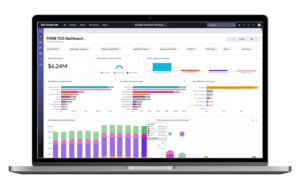In an effort to alleviate ongoing struggles from its legacy, spreadsheet-based planning system, a Fortune 500 insurance firm consulted multiple vendors in search of a centralized ITFM solution – ultimately selecting Nicus as its vendor of choice.
Under a CIO directive, and with guidance from the firm’s Director of IT Financial Management, Nicus IT Planning was implemented and deployed in mid-2013.
This case study captures the firm’s key challenges and how Nicus IT Planning worked to address them, while highlighting the core value delivered back to the business post-implementation.
The case study’s key inflection points are summarized below, and you can get instant, unrestricted access to the full document here.
To learn more about the details behind this implementation, please contact .
Challenges
The firm aimed to solve the following challenges perpetuated by its legacy, spreadsheet-based planning and budgeting system:
- Lack of trust and strategic alignment between the business and IT
- Inordinate time and effort required for budget creation and administration
- IT Finance overtaxed by questions and disputes, unable to pursue value-added analysis
- Inaccuracy caused by decentralized ownership and manual manipulation of data
Results
Within the first annual budget cycle using Nicus, the firm cited several strategic and tactical benefits; and in subsequent years, IT and executive leadership report those benefits have only grown stronger.
Strategic Benefits:
- Cultivated greater alignment of technology spend to business value
- Shifted the perception of IT from cost center to strategic partner
- Enabled leadership to pursue new multi-year planning efforts
- Increased the quality and quantity of insight supplied to stakeholders
Tactical Benefits:
- Accelerated planning/budgeting cycle by 8 weeks
- Unlocked over 2,000 man hours inside IT Finance and across the business
- Eliminated manual error risk through centralization and automation
- Delivered rapid visibility and accessibility of data with self-service, role-based reporting






